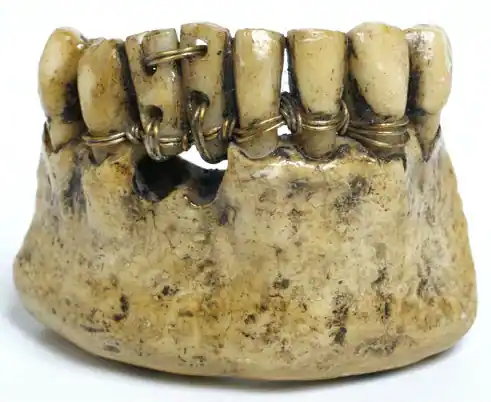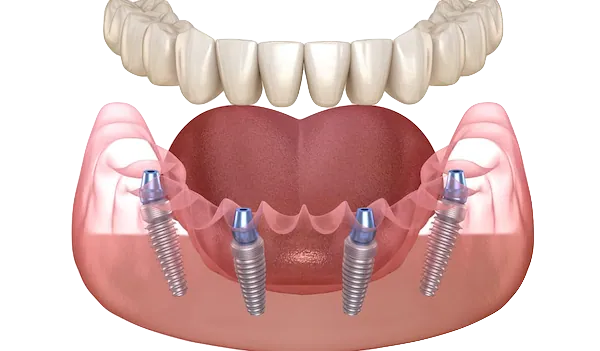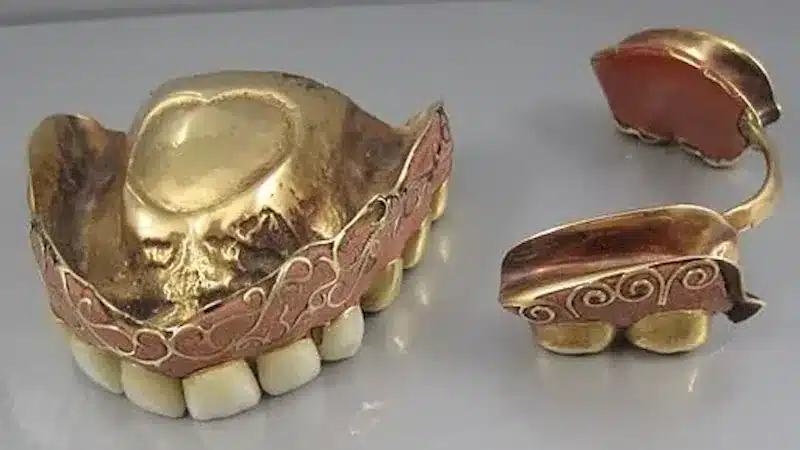While our natural teeth have remained relatively unchanged over time, our understanding of dental health has improved significantly. Throughout history, teeth have been considered crucial, and our ancestors developed ingenious methods to create dentures.
Our knowledge and technology have advanced significantly in the last two millennia, progressing from a hunter-gatherer society to industrialization and enabling us to travel across the world in hours. Additionally, our lifespan has more than doubled. However, these advancements have brought about a new need – the necessity for our teeth to remain healthy for a longer duration.
Despite little evolution in our natural teeth over time, we have developed extensive knowledge on maintaining oral health. Teeth have always been crucial, leading our ancestors to devise innovative techniques for creating dentures.
How dentures began
Dentures have a long and fascinating history dating back to ancient civilizations. The first documented instance of dentures dates back to 700 BC in Northern Italy, where the Etruscans made dentures out of animal teeth and bone. They were also crafted from human teeth of deceased individuals. If these teeth were unavailable, they resorted to using bones or stones from skeletons, held together by wire.

Over time, materials for dentures became more diverse, with some individuals using wood or ivory. Others opted for porcelain bonded to gold plates with springs for flexibility.
During the 16th century, dentures made of wood became popular in Japan. These dentures were called “ohaguro” and were often painted black to signify social status. In Europe during the 18th century, dentures made from ivory or animal teeth were common, but they were often uncomfortable and ill-fitting.
It wasn’t until the late 1700s that porcelain dentures were developed. These dentures were durable, looked more natural, and were comfortable to wear. However, they were expensive and often reserved for the wealthy.
In the 19th century, dentures began to be made from vulcanite, a type of hardened rubber. These dentures were more affordable and easier to produce, making dentures accessible to a larger population. During this time, the use of human teeth for dentures also became popular. Teeth were often extracted from the deceased and used to create dentures for the living.
The desire for functional teeth led some people to resort to grave robbing to obtain teeth from corpses. Soldiers’ teeth were commonly extracted before their bodies were retrieved from battlefields. Desperate individuals would even sell their own teeth to jewelers, blacksmiths, or barbers for money.
During the 20th century, advances in technology allowed for the development of better materials for dentures, such as acrylic resin. Denture production became more efficient, and dentures became more comfortable and natural-looking.
Despite significant changes in the past 2,000 years, some things have remained constant. The desire for functional teeth and attractive smiles persists to this day. Dentures of the past were unreliable and prone to deterioration, but since it was the only option available people went to great lengths to obtain them due to their strong desire for teeth.
Despite recent advancements, dentures remain a suboptimal choice for maintaining oral health. They can cause bone loss and damage to surrounding teeth, leading to mouth sores, blisters, excess saliva production, and triggering gag reflexes. Furthermore, they are prone to slipping out unexpectedly.
In recent years, dental implants have become a popular alternative to dentures. Dental implants are surgically placed into the jawbone and serve as a permanent replacement for missing teeth. While dental implants can be more expensive than dentures, they offer a more natural look and feel, and they do not require removal for cleaning or maintenance.

Full mouth dental implants can integrate into the bone and provide a stable foundation for new teeth. Dental implants are a superior choice over dentures as they prevent bone loss by mimicking the natural teeth’s function. Therefore, it is advisable to explore the advantages of dental implants before opting for dentures.
Significant progress has been made in the field of prosthetic teeth, and it is time to leave dentures in the past. Embrace modern dental technology by choosing full mouth dental implants.
To schedule a complimentary consultation at a Dental & Implant Centers Of Colorado office in your vicinity, choose your preferred location below or click here.





